Multiple sclerosis Multiple sclerosis
This disease, also known by other names (also known as platelet sclerosis and diffuse sclerosis) is more common in people of white race (especially in Europe in England and Holland) than in Asia (than in Japan, China, India, etc. ). In England, for example, there is one case for every 2,000 inhabitants.
Normally (80%) occurs in youth or half of life, between 20 and 40 years, with an average age of 28 years. Their presence in childhood (children under 10 years old) and after 60 years is very rare.
At best it affects somewhat more women than men, although the figures do not always agree.
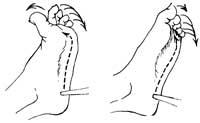
Etiology remains unknown. Some of the above mentioned creative causes (previous infections or intoxications, pregnancy) are currently ruled out.
Currently, in an infectious agent (virus?) Participation is considered possible when the person has a special constitutional predisposition and a mechanism of self-aggression. It is not a direct hereditary disease.
It is the demyelimizing chemical inflammation of the central nervous system, especially in the white matter. As a result of an infection or inflammation, scars appear in the interior of which are the deteriorated myelin jaws. These damages cause the nervous stimulus not to be conducted or badly conducted, not correctly.
There are numerous sclerosive plaques, irregularly dispersed in the brain and spinal cord. A hyperplasia of the neuroglia is observed in which the mielina caps damaged from the neurites are seen while the axons are preserved. Then, the axon is “uncovered”, as it were, in some way, and little by little it is shrinking. Demyelination, therefore, continues, but there is no pus flow.
What are the main symptoms?
The clinic is very variable. The start can be:
- fast, acute, with monofocal signs and symptoms. This type has a duration of less than 3 months.
- slow, chronic. Weakness is progressive, almost always bodily, with afaxia and other signs.
Many times the reasons why patients come to the clinic are the “tiredness” they feel in the arm or leg, or the difficulties they have when walking, climbing stairs or running. In one of every five cases, optic neuritis can be the first symptom. Or parestesias in hands, arms, legs, etc., often as tingling or crisis of creation.
All these symptoms are accompanied by 50% of pyramidal signs and 30% of sensory defects.
Among the classic signs stand out:
- Intentional tremor, especially in the upper extremities (arms and hands), which increases when starting movements and especially a little before reaching the goal.
- Nystagmus, sharp eye movements, especially horizontal, when looking to one side. However, asymmetric nystagmus has higher value for diagnosis.
- Mouth: the word is cut, the voice is monotonous, often like a high falsete.
- Ataxic march, not safe, with separate legs. If the patient, standing, closes the eyes and joins the feet, moves the trunk much more than normal to regain balance.
- Vertigo Vertigo Vertigo Vertigo
Taking into account these clinical histories and signs and conducting an antomopathological study (by biopsy). However, there are other signs that can be “provoked” and highlighted in the medical consultation:
- Signs of the primary pathways: the reflections (especially of Babinski) are “high”. If we excite the outer edge of the solera (with a needle or pen tip, for example) expand the thumb of that foot. See image below.
- Spasticity of the legs: the march is clogged, it is clumsy, or like spasmodic, like “jumping”.
- Epilepsy is rare (10%).
- The sensitivity is upset: parestesias (half an hour long, which then disappear). Normally there is no pain.
- There are always alterations of the bladder and rectum: generally incontinence or incontinence.
- Sexual dysfunctions. Currents and a huge source of frustation, especially in men.
- Tiredness, great difficulty to perform daily tasks. Towards the afternoon it is bigger and stops with heat or after exercise. Improves slightly with rest but not with sleep.
- Visual changes. Pigeons, but without sufficient gravity to cause disability. Due to the loss of depth detection capacity of the visual field, the patient should be informed of the risk of driving the vehicle.
The average survival is 27 years, after the first outbreak. Since the onset of the disease occurs around 28 years, the most likely average is that they live up to 55 years. But just as a 20-year-old can be in a wheeled sila in a few years, there are older people (even older than 70 in Gipuzkoa) who lead a quite normal life.
The disease is progressive. There is hardly ever prodrom or signs like signs. In the evolution of the disease, WORSENING can occur, as well as new outbreaks, whose prognosis is bad for the formation of other foci. On the other hand, it is also worth mentioning RETROCESSES or EMISSIONS OF EFFECT GASES, many times long, that can last up to 20 years or more until giving a curative appearance.
The first two outbreaks involve spontaneously, and much better than the following. It is therefore necessary to be very careful, since fascinated by the good situation after these outbreaks can become hypervaluing the effect of the treatment.
However, the prognosis is very serious. Some patients can drive their car for years, but ...
And about the treatment what?
During the outbreak, natural or synthetic ACTH is administered. As a support treatment, long-term synthetic ACTH is used (in injections or by mouth, 1 day). Some 66% of cases improve with ACTH. The rest is nothing.
The treatment is totally symptomatic. Total rejection of efforts (physical, intellectual). It is recommended to rest regularly. Other traumas (chilled, infections, operations, food changes, etc.) refuse. If the work is not very laborious it can be done.
Inform patients (especially about the risks) but without worrying too much.
Massages, cold, heat, electrotherapy and all kinds of physiotherapy do not serve at all. It is enough to ensure the mobilization of extremities, both active and passive.
How does multiple sclerosis affect?
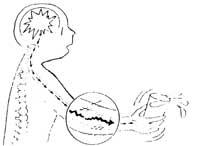
Multiple sclerosis usually appears in young adults, at the time when family and professional life is consolidated. It mainly causes the affected person to be incapacitated by ignorance of the cause, loneliness, by rare disease, ignorance, misunderstanding and uncertainty, with fear that in the future it may be invalid.
PHYSIOPATHOLOGY OF MULTIPLE SCLEROSIS
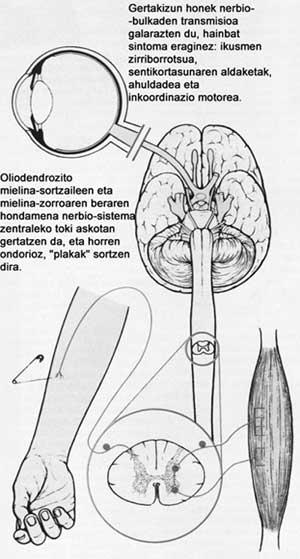
What is multiple sclerosis?

Multiple sclerosis is a neurological disease. We still do not know why it occurs, but the electric impulse affects the myelinic sheath that surrounds the nerve fibers that send to the germ and loin. In this way, in the areas of deterioration of the myelin, hardened tissue plaques (sclerosis) are created, which interrupt the nervous impulses temporarily or extensively. These plates can appear in different zones, so they can produce multiple and associated symptoms of different forms: alterations in the balance, discomfort of mobility (especially in the legs), which can lead to disability in the most serious cases, tiredness, visual alterations, discomfort in the sensitivity, tremors, speech difficulties, urological alterations, etc. In most cases, the symptoms of the disease occur alternatively and soften, with a different duration and frequency between the patients.
Demyelination plates can appear anywhere in the CNS. The location of these plates limits signs and symptoms.
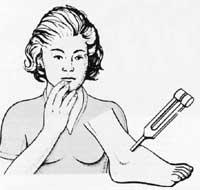
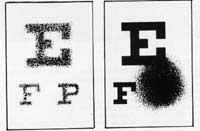
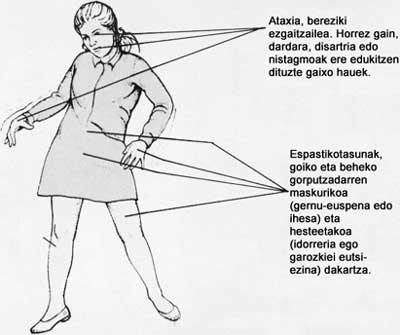
Note: Most patients affected by multiple sclerosis complain of sexual dysfunction and loss of libido.
Buletina
Bidali zure helbide elektronikoa eta jaso asteroko buletina zure sarrera-ontzian











